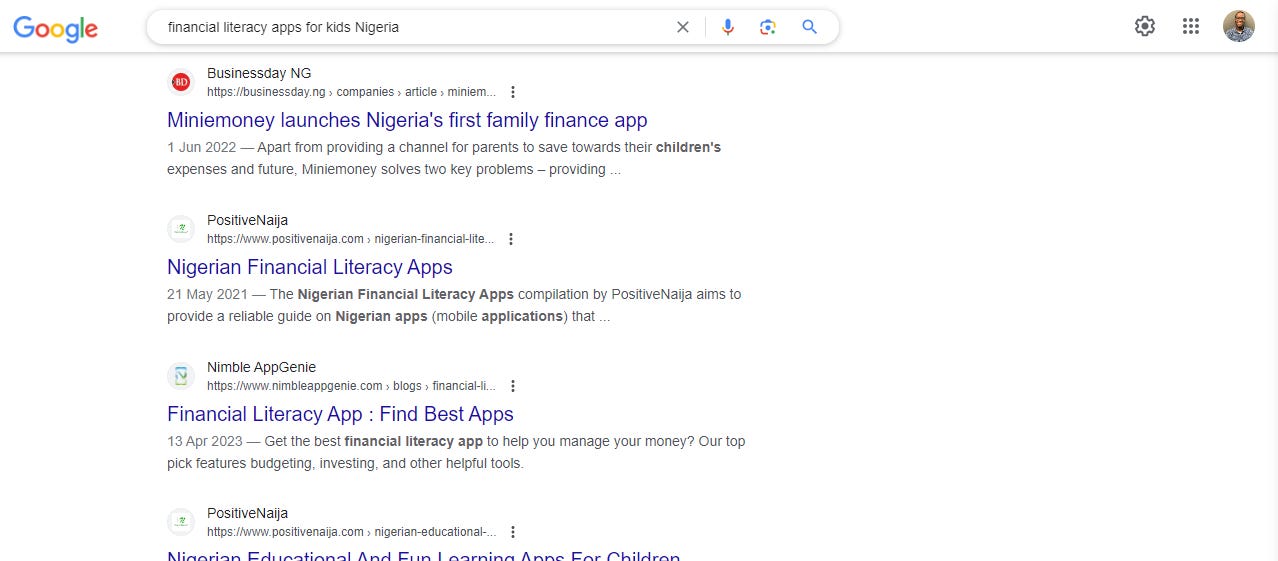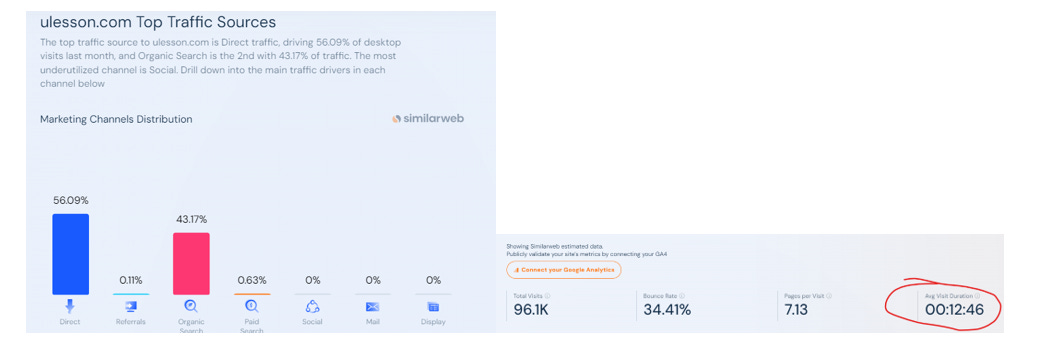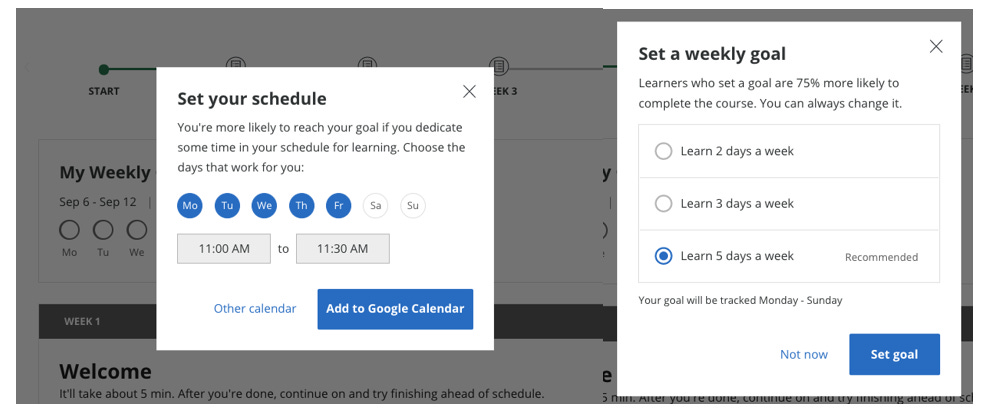Tl;Dr
Money Africa Kids (MAK) is addressing a need that exists. Parents and caretakers would love to give their kids something that’s an alternative to watching Cocomelon or going through boring lessons! The videos are well made and they have some early following. But the challenge? Discovery and conversion are weak. Parents can't find it easily, and even when they do, the website and app aren't quite convincing enough.
My advice? Focus on three key areas:
Word-of-mouth: Turn happy users into MAK evangelists. Incentivize referrals, share success stories, and make it easy for them to spread the word.
Content is king: Open up the content that complements the freemium model! Make free lessons accessible on the web and social media.
Re-engage, re-engage and re-engage: Keep kids coming back for more. Gamify the experience, track progress, and reward learning.
Building a loyal base organically first and polishing the website would go a long way towards building a community of financially savvy kids. Get that right first and growth will follow naturally.
Now, let’s get into the details.
How to Grow Money Africa Kids in a Cocomelon World.
Money Africa Kids is a product that teaches kids in primary and secondary school about financial literacy. Parents are likely looking for cheap ways to keep their kids busy in ways that Cocomelon won’t cut it and that’s where Money Africa Kids likely comes in.
As you read on, I’d prefer to Money Africa Kids as MAK as it’s easier to type :)
Kids learn through watching pre-recorded videos on a mobile app. Since the app is monetised via a freemium model, parents get the opportunity to see whether the app has value for their kids before making a 6 months commitment (N8,000) or an annual one (N10,000).
UNDERSTANDING MONEY AFRICA THROUGH ITS CUSTOMER JOURNEY
Awareness
In terms of awareness, how discoverable are they?
Well, they have quite the following on Instagram (3k+) vs Twitter (900+).
When it comes to growing an audience, the first step is to identify what people are looking for. Ok, let’s apply that here. If I search “financial literacy apps for kids Nigeria” or use longer phrases like “How can I learn financial literacy in Nigeria”, I couldn’t find them in the first 5 search results.
I can thus infer that MAK isn’t getting up to 5k site visits for it not to even appear on the first 5 search results. And SimilarWeb seems to agree.
How are other apps doing it? Other educational apps like uLesson have been able to use PR as a channel to make themselves discoverable. As a result, the average time spent is about 12 minutes.
12 minutes might seem like a lot but education (especially when it’s one not tied directly to my child’s academics) requires building trust and reaching them multiple times with evidence and points for the parent (decision-maker) to consider whether the solution fits the needs of the child.
Byjus (Indian Edtech) are discoverable using YouTube as its top traffic source. It’s even better than ULesson because it has built domain authority over time so that anyone coming to the site doesn’t need to spend more than 3 minutes before finding what they need.
Consideration.
Now let’s say Money Africa is discoverable, how easy does it help the customer answer “Ok, I’ll go ahead to try this.”
In summary, not easy.
Let’s start with the website. I love how it tells me what it is and what it’s about. But crucially:
Who does it target? It doesn’t tell me who it’s for – is it targeting schools or parents who want to teach kids about financial literacy?
Is it legit? – can’t see any signals or credentials.
How do kids learn? Video, audio?
Who has used this? While there were reviews on the app, I couldn’t be certain that they were from real people. Could you use app store reviews instead?
Also, how much is it going to cost?
These are some of the questions someone would be looking for answers to. They might not expressly say this but psychologically, seeing this reduces the friction and increases the anxiety that they would naturally have if they were not answered.
Ok, let’s say I have all the information and the I’ve considered to take the next step. What now?
Activation.
How long does it take a user to see the value of the product?
Sign-up is straightforward but I would recommend that we drop the user straight to watching a video or signing up. The model is freemium so you should essentially start free.
There are also copy changes I would recommend.



Loyalty.
OK, I learned about MAK, signed up, and now I’ve taken my first lesson. How does MAK keep bringing me back over time?
I noticed that there were 2 free courses and 6 paid ones. There are two ways I could be upsold:
Engagement: I spend a longer time per video and can see how a premium video explains it better.
Limits: I’ve watched all the videos and now need a new challenge.
I didn’t experience anything like this, and it makes it hard to remember to come back to the product.
How do other products do retention? Coursera helps students set goals that are synced with their calendars, so it reminds them to take the course. Such could also be replicated here. This can even be done by the parents.
With all the stories said, how would I grow Money Africa – What needs to change? What needs to improve?
Growth in the way that many people consider it is “We need to get to a million users”, “We need to hit N100m in ARR by the end of the Year”, and on and on. There isn’t anything wrong with this but there’s an implicit assumption that the company makes about its readiness to grow:
It assumes that it has hit PMF – there’s a segment of users that use and reuse the product over time.
It assumes that it can acquire users in the target audience in a cost-effective manner
It assumes that it can extract enough revenue from users that allow PMF to continue and to acquire users sustainably.
So, with this context, will I say that Money Africa is ready to “grow”? I don’t think so. The product still seems too early and doesn’t look like it’s acquiring users over time.
I can’t speak about the third but let’s do some not-so-clean back-of-the-envelope math. Say, the company has 1k+ users (using Play Store downloads) and it’s able to extract revenue from 10% paying the annual subscription, that’s about N1m in ARR.
Will N1m in ARR be able to allow it to produce high-quality videos, attract users and still sustain it? Again, I don’t think so.
Still, the company can do some things to improve its chances of growth.
Three actions drive value on MAK:
Virtual bootcamps. The company hosts quarterly boot camps for students.
Taking modules on the app. You log in to the app to take courses. This is the main thing that brings people to it.
Flash cards. I would have loved to see this work, but it seems it’s still in development.
SETTING THE STRATEGY
Rather than present a long list of things to do, this is what I would focus on at least within the next quarter:
Make Word of mouth effective (High). Acquisition shines when it’s repeatable and nothing shines brighter than seeing your existing users bring in new users who bring in their new users and on and on. As a kid takes a module, a problem could be raised after the lesson. They may now decide to share it with their dad, uncle, or friends. These people see this answer and by so doing join Money Africa. This in turn makes them a user and the loop starts over again. Same thing for flash cards.
Consider incentivising referrals from parents (Low). I and many before me got into secondary school, a new lesson teacher by word of mouth. How could this be used here?
Make Content open and accessible (High). The people who use freemium as a business model make it as easy for as many people as possible to see the value. Now, MAK could make this open everywhere. On the website, on Instagram, make it the first thing people see as they log in. As content is created, a page is created for it which is indexed by Google. This makes it easier for another person to see it and on and on.
Make it easy to re-engage users (High). Help existing users come back, and share with others so that customer acquisition can be repeatable.
Optimise for Instagram (Medium). The audience already seems to hang out and that’s where most parents seem to hang out to get tips. It’s now about creating content in the right format that appeals to them. I’d leverage user-generated content when it can be done.
Improve website (High). Education isn’t like E-commerce or Social. It’s like Financial Services. It’s tricky, people are sceptical and ready to bash you when it doesn’t achieve its goals. To counter this, the website needs to be massively improved to reduce the trust barrier. I’d consider adding case studies, pricing, social proof, testimonials from real people, and an About Us page with the story and credentials.
Things not to do.
Don’t explore SEO as in “SEO”. The website copy is good and can be better. Still don’t expect that optimising for Search is going to bring the much-needed traffic. SEO takes time to see its impact and search volume at the moment is already low. So, I would rather explore other channels.
Be sceptical about paid channels. Whether it’s paid ads or paying influencers, I’ll be sceptical because the ROI may not cut you. You’d need to believe that people that you have a high conversion right from the initial point to, sign up, consider free or purchase a subscription.
If you enjoyed this, please like and share it with your friends, colleagues, or anyone else who could benefit from it🙏🏾.
Also, if you want me to cover any other product, please let me in in the comments. If you’d love to chat, you can send me an email or send a DM.
Thanks for reading.
Kamso.












Well done! I really enjoyed reading this. A few things I may not totally agree with here and there, but overall a really solid piece.